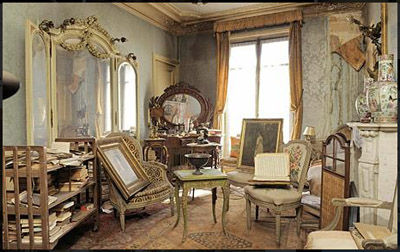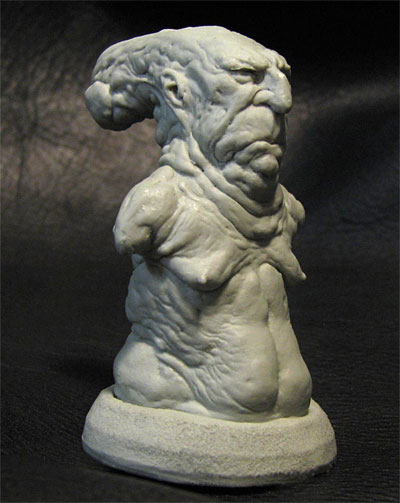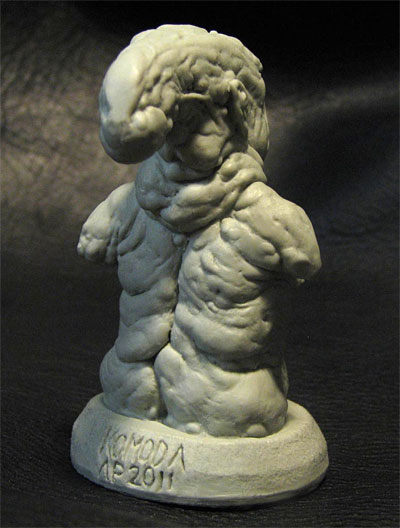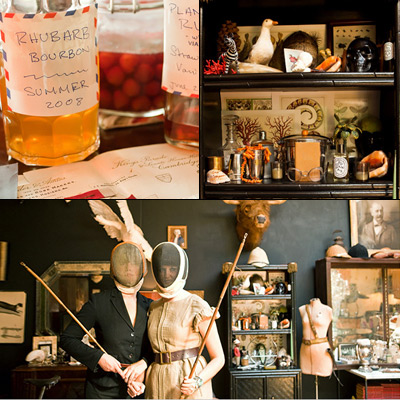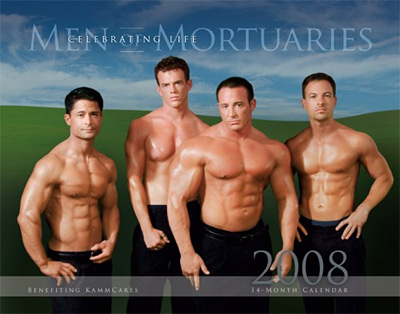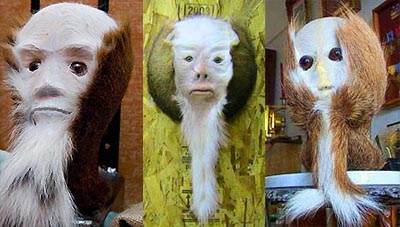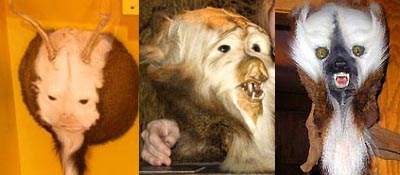Please welcome guest-blogger and wunderkammer artist Jessica Joslin’s formal addition to our Staff Page! – Ed.
One of the things that I love about living in Chicago is that it’s merely a hop, skip and a jump away from Wisconsin. For those of you on the coasts, that statement may make little sense. Still, I am wholeheartedly convinced that there’s magic there. Wisconsin’s had far more than its share of brilliant eccentrics, outsider artists and charming crackpots. From Alex Gordon’s jaw-droppingly magnificent House on The Rock –a place whose wide-ranging wonders utterly defy description— to the architectural gems of Gordon’s sworn enemy, Frank Lloyd Wright, to the strange and beautiful man-made grottos that dot the countryside, Wisconsin is a treasure trove of wonderful weirdness.

Eugene Von Bruenchenhein (1910-1983) was a true Wisconsinite, in the very best (and most eccentric) sense of the word. He lived in a world of his own making, hidden away in a modest house in Milwaukee with his beloved wife and muse Marie. During the days, he worked as a baker, but in his own words, he was a “Freelance Artist, Poet and Sculptor, Inovator [sic], Arrow maker and Plant man, Bone artifacts constructor, Photographer and Architect, Philosopher.” In each of his chosen disciplines, Von Bruenchenhein was incredibly prolific. When his work was discovered shortly after his death, his home was literally stuffed to the gills with his creations. His paintings are vivid, apocalyptic explosions of color, swirling with mysterious monsters and elusive, organic forms. The distinctive surfaces are partly a result of his process. Since brushes were often an unattainable luxury, he used his fingers, twigs or bushes made of his wife Marie’s hair. Marie herself is a lovely enigma. Eugene clearly adored her. She was his one and only model in a series of photographs influenced by the pin-up imagery of the time. In his images, he turned her into a queen, a goddess, a siren… constructing crowns out of tin Christmas ornaments and adorning her with wreaths of pearls.
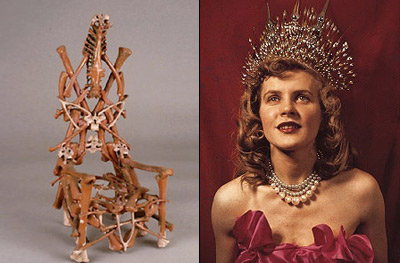
Left: one of Von Breunchenheim’s bone chairs. Right: A photographic portrait by Von Breunchenheim of his beloved Marie.
It was Von Bruenchenhein’s bone chairs that first caught my eye. They are tiny and intricate, constructed from the detritus of many a chicken dinner. Apparently, he ate a lot of chicken, because he also constructed wonderful little bone towers. They look almost like architectural models of the Watts towers.
I am also fascinated by a snapshot of a wall in his home, probably in the basement, scrawled with his philosophical musings. “Death haunts men forever and finally wins” is written directly underneath “Electric meter” and “Water and Gas.” It’s as if he felt that his revelations needed to be put somewhere permanent, somewhere that could not be misplaced like a sheet of paper. It’s like having the rare chance to peer into his head. Next to a pin-up in a bikini, ever the romantic, he writes: “All go down the drain. Collect yourself. Tomorrow it is too late. Make love worth ALL” – and above a dark water stain, there is “Love is a fire ever bright.”
To see more, visit his extended biography at Kinz + Tillou and view a great collection of photos at the Hammer Gallery site. More images after the jump!
